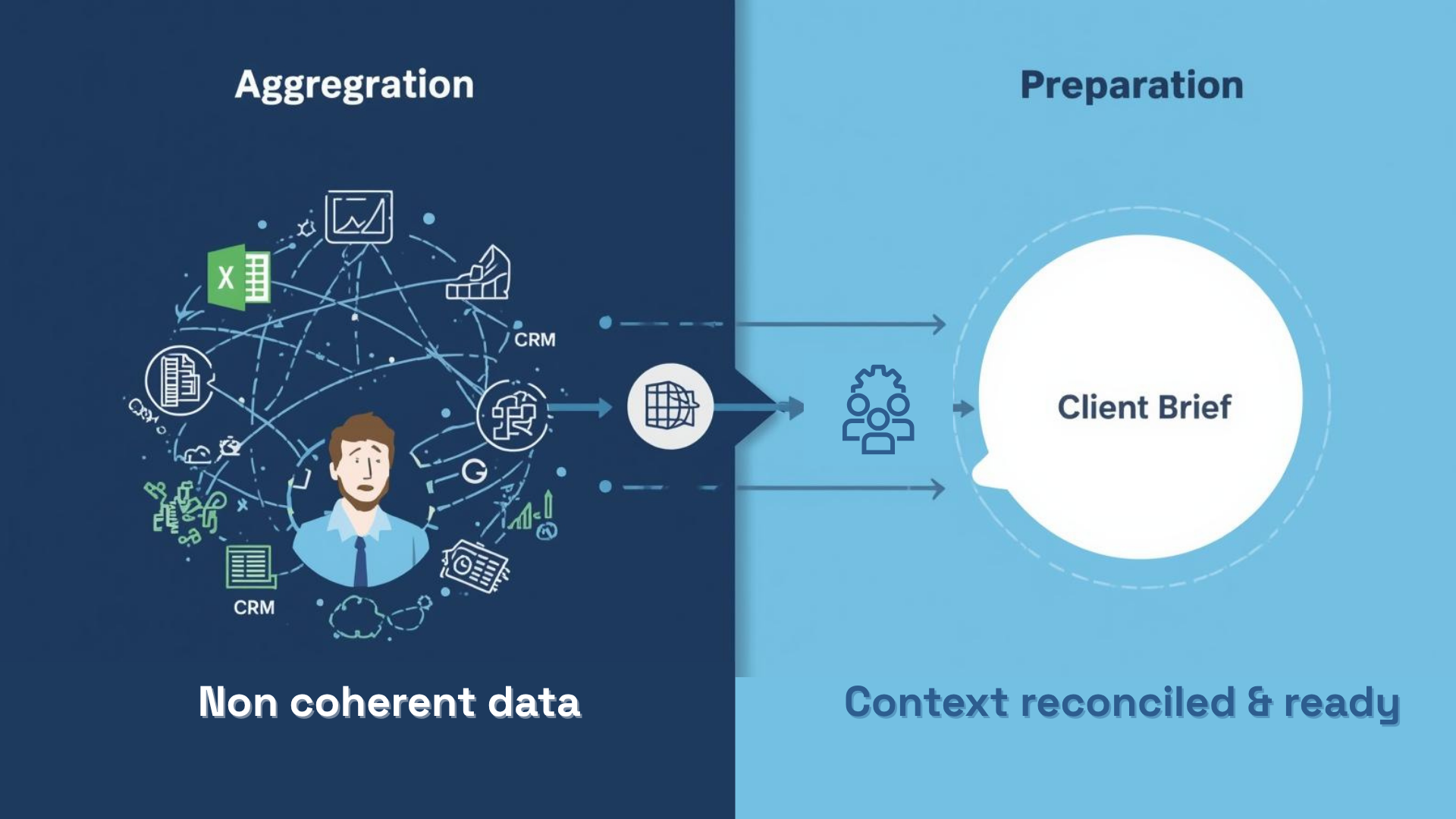Aggregation Isn’t Advice: Why Wealth Firms Need Context, Not Just More Data

Every wealth firm thinks it has a data strategy. New dashboards launch. More feeds flow in from custodians, CRMs, and planning tools. Yet every Monday morning, the same scene plays out: an advisor sits down to prepare a client review and spends the next two hours hunting for numbers that should have already been aligned.
Aggregation was supposed to fix this. Instead, it created a new problem: more data, less clarity.
The Great Mismatch
Over the past decade, firms have invested heavily in APIs, data lakes, and connectors — all in the name of unification. But what got unified was plumbing, not perspective.
The CRM stores goals in natural language. Custodians express holdings in tickers. Planning tools turn everything into long-range projections. None of these systems naturally fit together into a single, coherent narrative that a human advisor — or a client — can actually trust.
Everything is “connected,” but nothing is truly consistent.
Aggregation Isn’t Preparation
Aggregation collects data. Preparation interprets it.
And interpretation is still painfully manual. Advisors export spreadsheets, verify mismatches, cross-reference systems, and hope every figure is both current and defensible. These invisible translation steps are where most of the industry’s capacity evaporates.
Firms have automated retrieval, but not reasoning. They digitized the data, not the understanding.
The Real Cost of Data Sprawl
When information doesn’t line up, confidence collapses.
Teams double-check instead of deciding. Compliance reruns reports to ensure accuracy. Advisors hedge explanations during client meetings because they can’t prove which system is “right.”
This cost doesn’t appear on a P&L. But it shows up everywhere else — in lost time, operational drag, shaky trust, and slower growth.
This isn’t a technology failure. It’s an architecture failure.
The Missing Middle: Context Automation
What wealth management needs next isn’t a new dashboard — it’s a layer that understands how the pieces fit together.
Clarista sits in this missing middle. It reads from CRM, planning tools, custodians, and documents — without copying data — and transforms those inputs into governed context. Every data point is reconciled, labeled, and structured with lineage intact.
From that foundation, Clarista generates Conversation Briefs and Advisor Podcasts that instantly reveal what changed, what it means, and what to discuss next.
- Preparation drops by 80%.
- Understanding becomes automatic.
- Every number becomes explainable by design.
- Advisors show up informed, not assembling.
Confidence by Construction
When systems can explain themselves, humans can move faster.
- Lineage replaces anxiety.
- Compliance sees the same evidence the advisor sees.
- Meetings shift from “Is this right?” to “What’s next?”
That is when firms begin to scale personalized advice — not by adding more people, but by eliminating the hidden cognitive tax of fragmentation.
The Takeaway
Most firms don’t need more data. They need their existing data to make sense.
Aggregation solved access. Clarista solves alignment — turning raw feeds into ready, governed, and traceable context. In a world flooded with information, the real competitive advantage is understanding.
Read the full original article on Medium.





